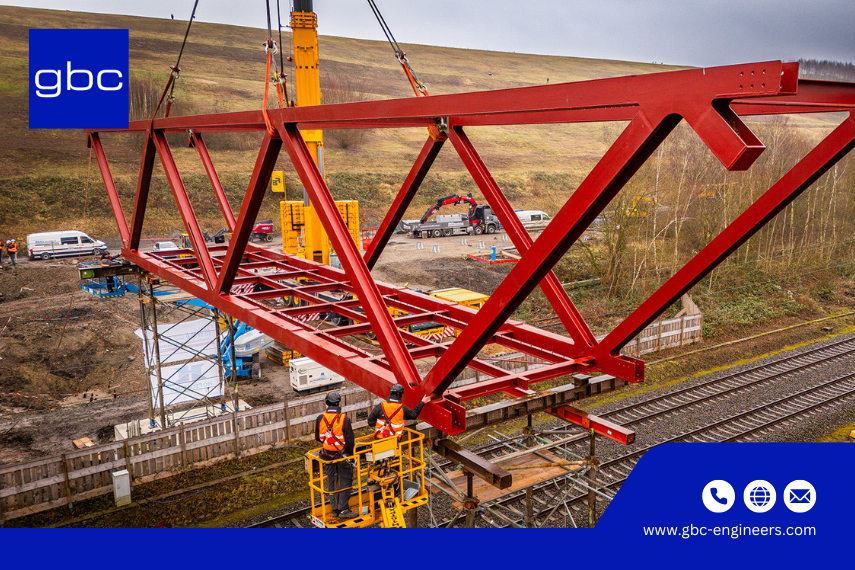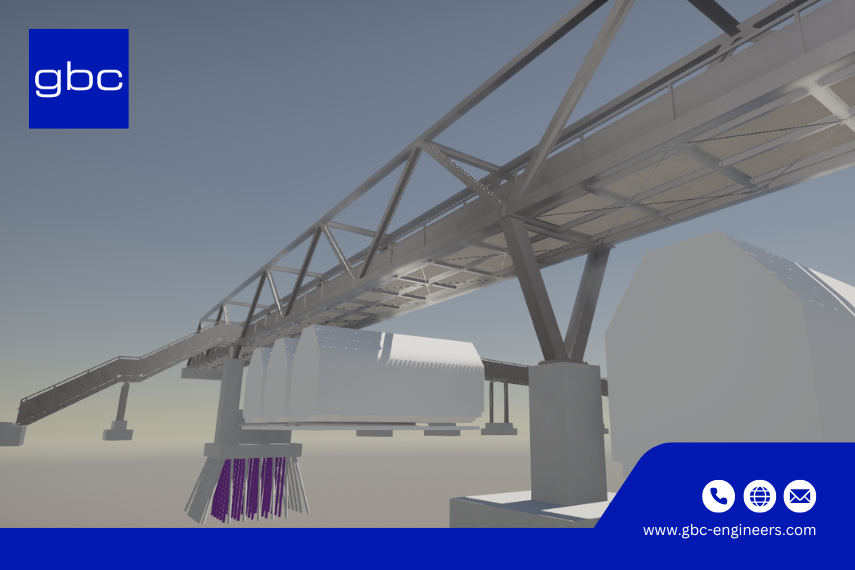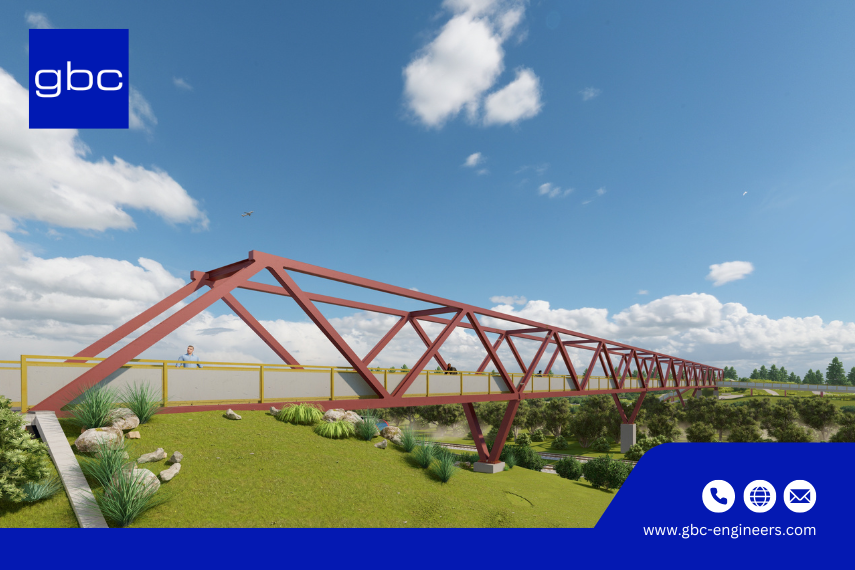The Haldensprung Bridge is a striking example of contemporary engineering and joint innovation, playing a key role in the International Garden Exhibition (IGA). Spanning nearly 160 meters, this dynamic pedestrian and bicycle bridge provides an essential, accessible link between the lively districts of Huckarde and Deusen. Its sturdy steel truss structure, enhanced by integrated ramps and stairways, promotes inclusive access and strengthens connections within the community.

Structural Ingenuity: Semi-Integral Design and Material Choices
One of the most noteworthy aspects of the Haldensprung Bridge's construction is its semi-integral design. This innovative approach means the bridge has bearings exclusively at the abutments, while the steel formwork is rigidly connected to the pillars. This semi-integral structure offers significant advantages:
- Enhanced Stiffness and Stability: It provides higher stiffness and stability, particularly in the central span of the bridge.
- Thermal Management: The design allows for a more balanced expansion and contraction in response to thermal changes, crucial for long-term structural integrity.
- Reduced Maintenance: By omitting bearings at the piers, the need for future maintenance is considerably reduced.
However, this advanced design isn't without its complexities. Potential challenges during the design phase included managing high stresses from imposed deformations and accommodating high bending moments at the piers. These factors necessitated precise coordination between the steel superstructure and the concrete substructure to ensure structural soundness.
The bridge deck itself is constructed from precast concrete planks. The selection of precast elements offered clear benefits for the project:
- Accelerated Construction: Precast planks significantly speed up the installation process.
- Cost Efficiency: Manufacturing elements off-site often leads to more economical project execution.
- Enhanced Safety: The ability to fabricate components in a controlled off-site environment contributes to a safer construction process.
The primary material for the bridge's main structure is S355 J0 steel. Steel was chosen for its very high strength-to-weight ratio, which is ideal for bridge construction, and its suitability for fast construction through the prefabrication of elements and subsequent on-site assembly.

Our Contribution: Comprehensive Engineering Services
Our team played a pivotal role in the Haldensprung Bridge project, providing
comprehensive services encompassing Work Stage 3-5 (LP3-5) under the German HOAI standards. This detailed scope of work included:
- LP3: Entwurfsplanung (Design development)
- LP4: Gehnehmigungsplanung (Approval planning)
- LP5: Ausführungsplanung (Detailed construction drawings)
Specifically, our contributions to LP5 were critical, involving:
- Steel detailing and drawings
- Reinforcement and formwork drawings
- BIM modeling using TEKLA software, a tool particularly well-suited for complex steel structures
The most critical aspects of our structural design contribution involved accurately reflecting the bridge's complex geometry, meticulously detailing the intricate steel-concrete interfaces, and ensuring all drawings were perfectly aligned with the demanding static calculations.
The Power of BIM: Efficiency and Coordination
Building Information Modeling (BIM) proved to be an indispensable tool throughout the project, significantly contributing to its efficiency and overall success. The BIM model was instrumental in several key areas:
- Geometry Alignment: It ensured that all drawings were precisely aligned with the overall geometry of the bridge.
- Visualization: Complex connections, often difficult to conceptualize from 2D drawings, could be clearly visualized, aiding in design understanding and problem-solving.
- Trade Coordination: Perhaps most importantly, BIM facilitated seamless coordination between various trades involved in the construction, including steel, concrete, rebars, and precast elements, minimizing clashes and ensuring a smooth workflow.
Unveiling the Construction Journey
The construction of the Haldensprung Bridge involved a strategic sequence of phases and the use of diverse structural components. The bridge is composed of a steel truss superstructure, distinctive V-shaped steel struts, robust reinforced concrete piers and abutments, and the aforementioned precast concrete deck planks. The foundations incorporate both deep foundations with pile groups and shallow foundations. The general sequence of construction unfolded as follows:
- Construction of Piers and Abutments
- On-site Assembly of the Steel Truss
- Lifting the Steel Truss into Place using Cranes
- Installation of the Precast Deck

Beyond Engineering: Aesthetics, Sustainability, and Community Impact
The Haldensprung Bridge is more than just a functional structure; its design elegantly integrates with the verdant landscape of the International Garden Exhibition. The striking red and green colors of the superstructure are carefully chosen to blend harmoniously with the surrounding natural environment. Furthermore, the bridge's slender design creates a light and pleasant visual impression, avoiding a heavy or intrusive presence in the landscape.
Sustainability was a key consideration in the project. The use of off-site fabrication for the precast deck is a prime example of sustainable construction practices. This method inherently leads to less material waste, reduced on-site emissions, and minimized disruption to the surrounding area, contributing to a more environmentally friendly build.
For the local communities of Huckarde and Deusen, the Haldensprung Bridge holds profound significance. It provides a safe, barrier-free connection, significantly improving access for both pedestrians and cyclists. This enhanced connectivity directly improves daily mobility and actively promotes social and recreational interaction between the two districts, enriching the quality of life for residents.
The project also showcases innovative engineering solutions. The use of V-shaped steel struts to directly connect the truss to the piers is an uncommon yet highly aesthetic and structurally efficient detail. Additionally, the semi-integral design, with its rigid pier connection, cleverly reduces the reliance on traditional bearings. Looking to the future, the bridge was designed with modularity in mind, allowing for possible future replacement of deck elements if needed, thus ensuring better durability and adaptability for years to come.